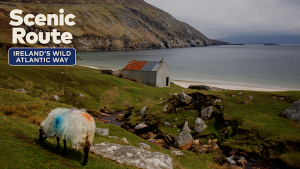
Heads up: some of the links on this site are affiliate links. If you click and make a booking or purchase, I’ll make a commission (at no extra cost to you). I partner with companies I personally use and the $$ goes towards creating more awesome, free travel content.
No trip to Puerto Rico would be complete without a visit to Viejo San Juan, a historic district with narrow streets, colorful buildings and tree-shaded plazas. Even though it occupies a small area, there are lots of things to see and do in Old San Juan, from castles and churches to cocktail bars and cool street art.

This walled city is very walkable and numerous landmarks here have been designated as UNESCO World Heritage Sites, including La Fortaleza, El Morro and San Cristóbal castle.
Pop your comfy shoes on and spend a day getting lost in the old town, then hit the beach or try a pina colada in the place where it was invented. Here’s a list of the very best things to do in Old San Juan on your visit.
Things to Do in Old San Juan
Parque de Las Palomas
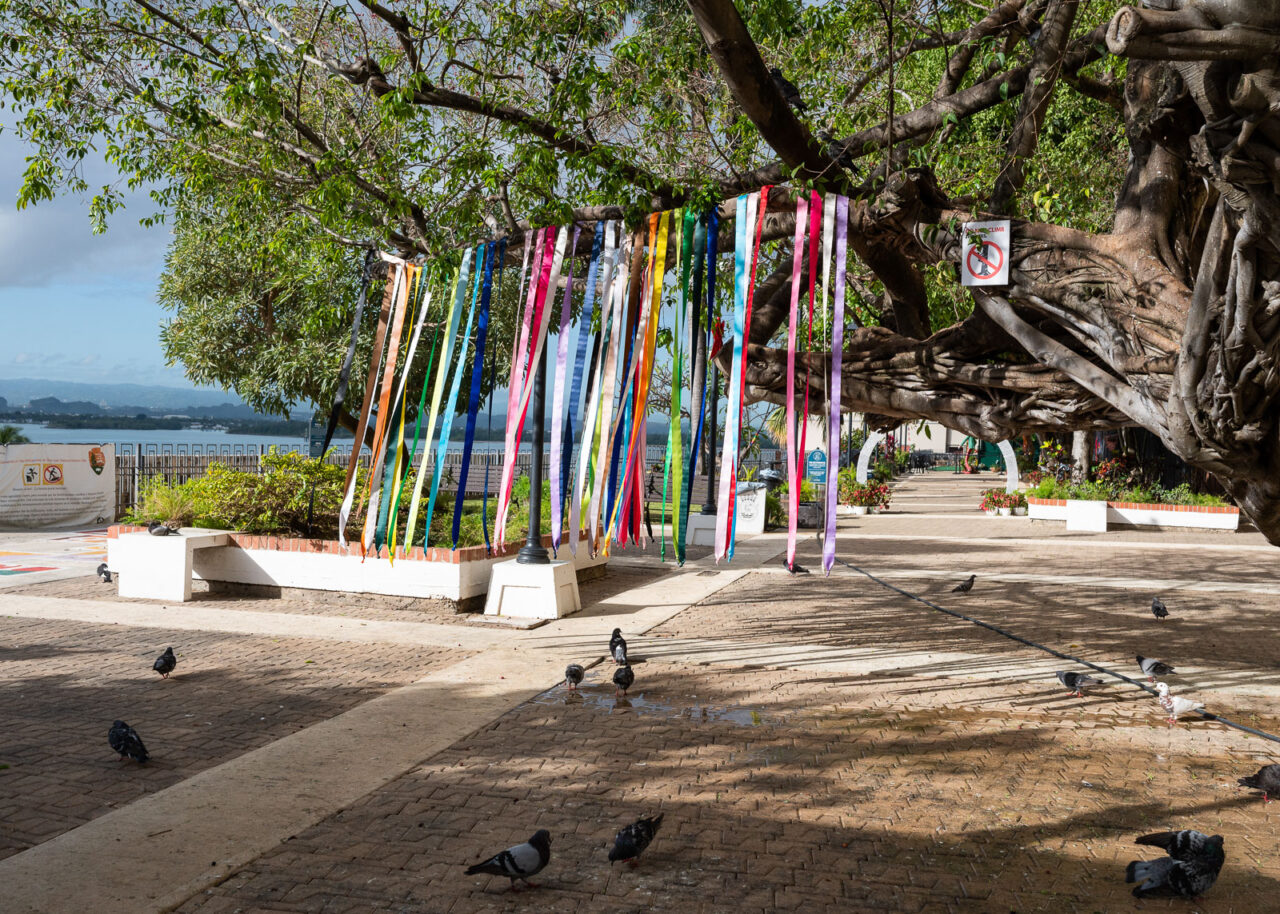
Start your day by taking a stroll through Parque de Las Palomas, a pretty park with views over the Bay of San Juan. The park’s name translates as “Pigeon Park” and it gets its name from the many pigeons that wander around the grounds. Visitor’s can purchase bird seed and feed the birds from the palm of their hands – it’s a particularly fun spot for kids and families.
La Fortaleza
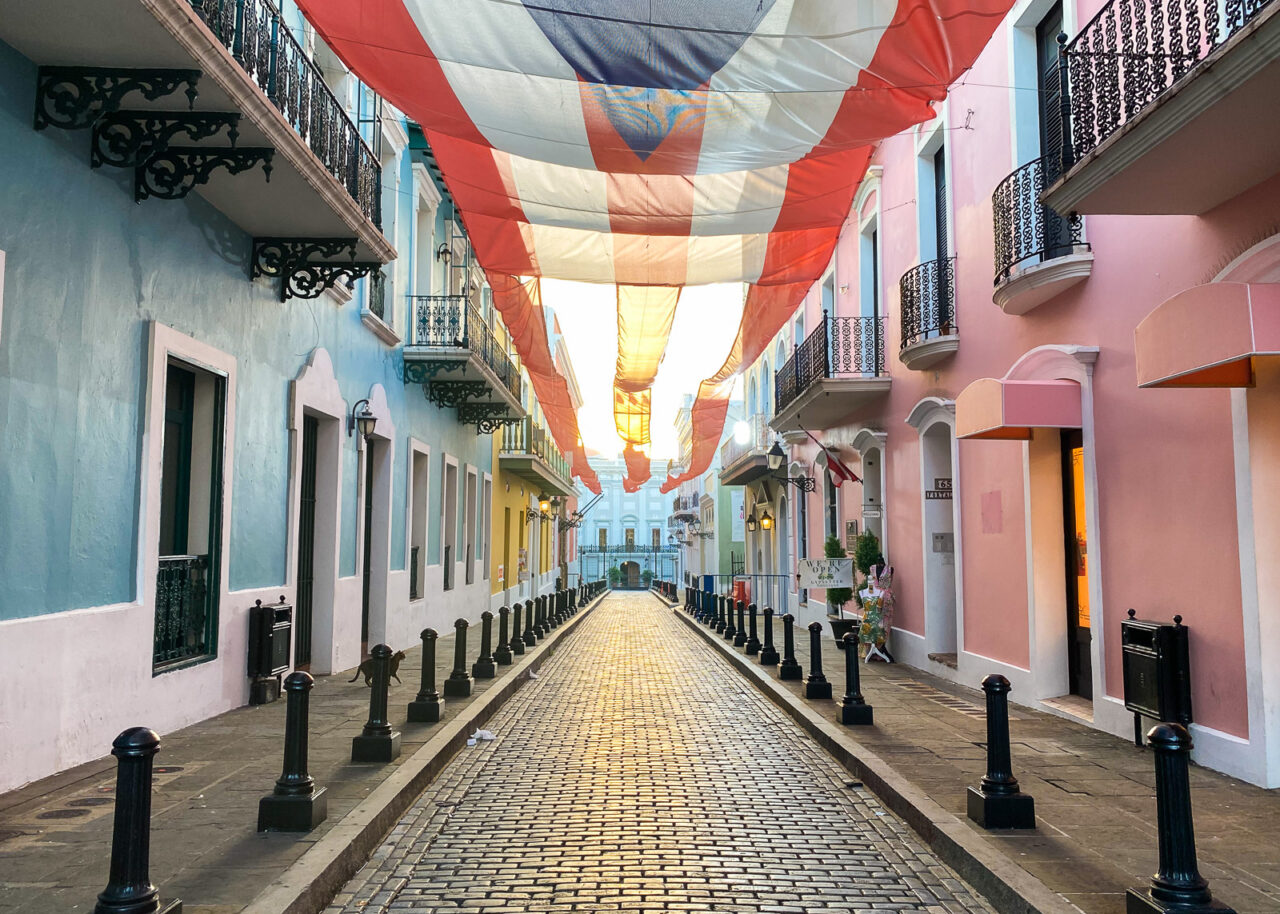
La Fortaleza is the official residence of the governor of Puerto Rico, but in the past it has served as a fortress, an arsenal, and even a prison.
The fortress was completed in 1540 to help defend the island, although it fell to the Earl of Cumberland in 1598 and the Dutch Commander Boudewyn Hendrick in 1625. In 1846 it was converted into a governor’s house, and over the centuries it has housed over 170 governors of Puerto Rico.
If you’d like to take a look inside, 30-minute guided tours are usually available from Monday through Friday between 8:15 am and 3:30 pm. In front of La Forteleza is a beautiful cobblestone street with blue and pink buildings and a Puerto Rican flag hanging overhead. This is one of the best photo spots in Old San Juan, so have your camera ready!
Barrachina
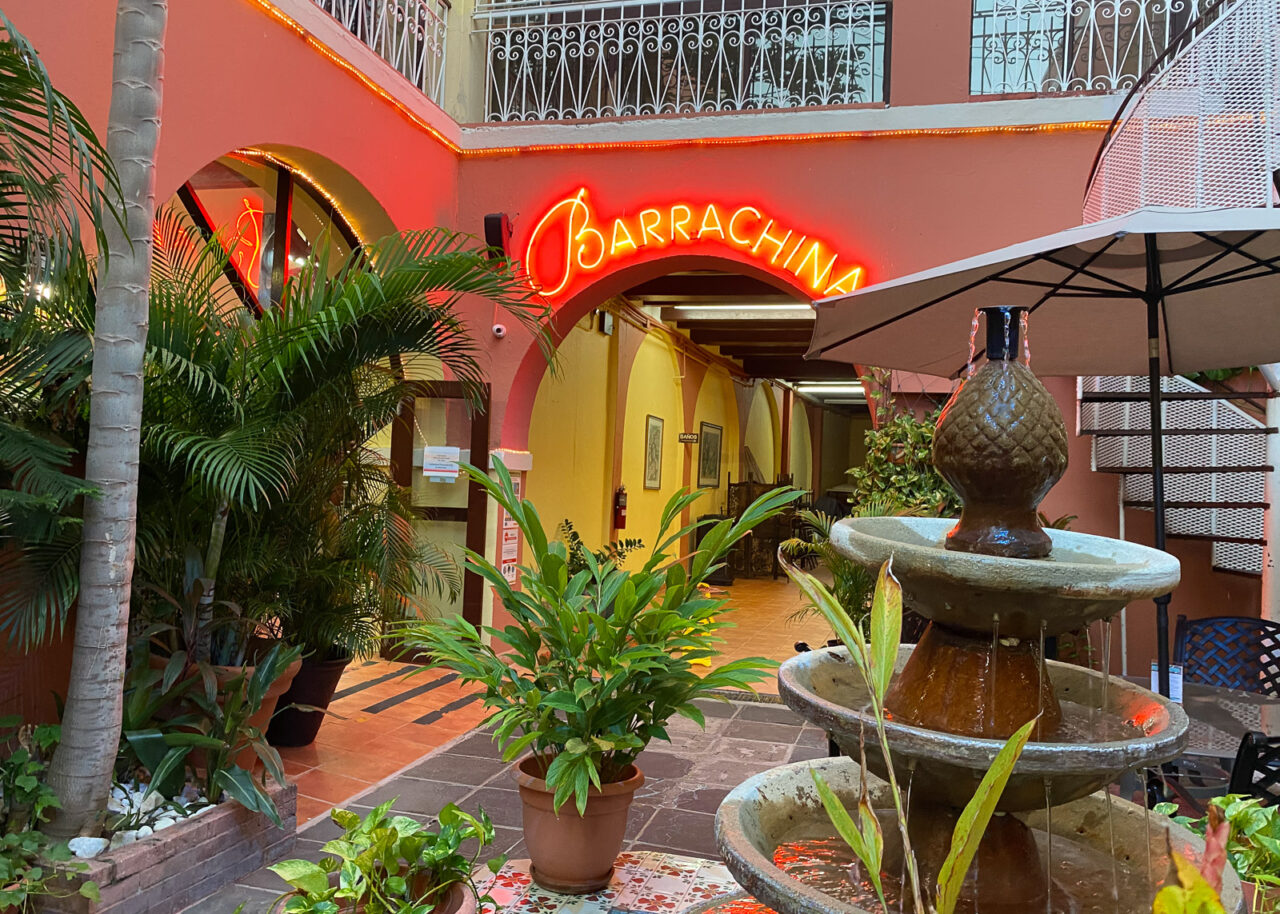
There’s a bit of a debate over who invented the pina colada, Puerto Rico’s national drink. Some say it was a bartender at Barrachina called Don Ramon Portas Mingot, while others say it was invented by Ramón “Monchito” Marrero, who was commissioned to create a signature cocktail for the Caribe Hilton.
Barrachina is located in Old San Juan near La Fortaleza, and displays a plaque inscribed with the words “The house where in 1963 the pina colada was created by Don Ramon Portas Mingot”. If you feel in the mood for a refreshing drink, stop by Barrachina to try their version of the pina colada and snap some photos in the restaurant’s adorable courtyard garden. With a central fountain, pink walls and tropical plants, it’s definitely a great spot for Instagram photos!
Catedral Basilica Menor de San Juan Bautista

Built in 1521 during the Spanish colonization of Puerto Rico, Catedral Basilica Menor de San Juan Batista is the second oldest church in the western hemisphere. It serves as the seat of the Archdiocese of Puerto Rico and has a beautiful gothic facade.
The church has been damaged by hurricanes over the years – the original building was actually destroyed in a hurricane and was rebuilt in 1540. A second hurricane in 1615 ripped off the roof and caused a lot of damage, meaning it had to go under renovations. It was also heavily looted and pillaged over the centuries, most notably in 1598, when troops under the Earl of Cumberland stormed and ransacked the city.
Plaza de la Catedral

One of the most beautiful plazas in Old San Juan is Plaza de la Catedral, which features a large tree, benches and a variety of bronze sculptures. Located opposite the Cathedral, this picturesque plaza is a lovely place to stop and catch your breath.
Escalinata de Las Monjas

If you’re looking for the perfect spot to snap Instagram photos, check out Escalinata de Las Monjas, a set of stairs surrounded by beautiful pastel colored buildings. Located directly off Plaza de la Catedral, this is definitely one of the prettiest stairways in Old San Juan!
Plazuela La Rogativa

From Plaza de la Catedral, head towards the water and you’ll discover Plazuela La Rogativa. This is one of the most scenic spots in San Juan, offering panoramic views of the Bay of San Juan, La Fotaleza, San Juan gate and the city walls. In the center of the plaza lies a beautiful bronze monument depicting a legend called “The Procession”, which took place in 1797 during an invasion by the British Army.
According to legend, a Catholic bishop led a procession of women holding crosses and torches, while ringing bells and chanting hymns. The army thought that reinforcements were flooding the city and figured they were outnumbered, so they soon retreated and abandoned their plan of attack.
Casa Rosa

This beautiful bright pink building is located right by the water and was built in 1812 as a barrack for the troops assigned to the San Agustin Bastion. It later functioned as an officers quarters for the Spanish army and now operates as a day care center for the children of employees of the Government of Puerto Rico.
El Morro
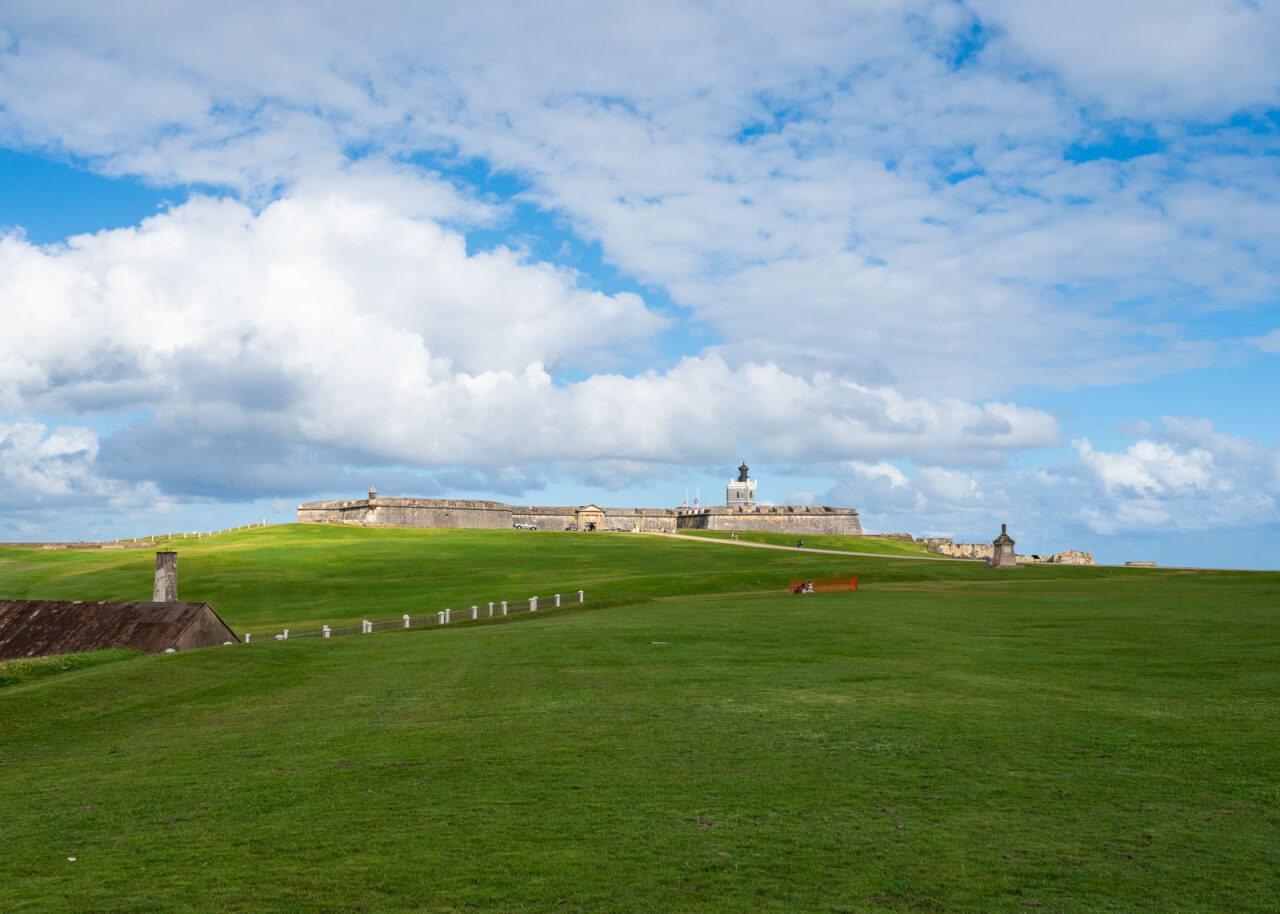
One of the most famous landmarks in Puerto Rico, Castillo San Felipe del Morro is a large fortification perched on the northwesternmost point of Puerta de Tierra. It was built over a period of around 250 years from 1539 to 1790, and was designed to protect the city from sea-based attacks.
During the period of Spanish rule, El Morro was used to defend Puerto Rico from invasions by the British, Dutch, and pirates. After the Spanish-American war Puerto Rico fell into the hands of the United States and the fortress was designated as part of Fort Brooke.
It served as a military outpost during the First and Second World Wars, before being passed on to the National Park Service in 1961. The castle was turned into a museum, and was declared a UNESCO World Heritage Site in 1983, along with the walled city of Old San Juan.
Santa María Magdalena de Pazzis Cemetery

Ready to see one of the most beautiful cemeteries in the world? Santa María Magdalena de Pazzis Cemetery is a stunning cemetery perched right on the ocean, not far from El Morro. Dating back to the 19th century, this impressive graveyard is the final resting place of many famous Puerto Ricans.
The cemetery is filled with ornate tombs, elegant gravestones and even marble busts of the deceased. In the center of the graveyard lies a circular chapel with a pastel peach dome. The striking colors contrasting against the turquoise blue ocean really add to the beauty of this resting place.
José Celso Barbosa, the founder of Puerto Rico’s statehood movement, composer Rafael Hernandez and the actor José Ferrer are all buried here. Its oceanfront location was chosen to symbolize the beginning of the journey into the afterlife.
Museo de las Américas

Museo de las Américas is located inside the historic Cuartel de Ballajá, an impressive building that once served as San Juan’s military barracks.
The museum contains three permanent collections dedicated to the cultural heritage of Puerto Rico and the Americas, along with a variety of rotating exhibitions. Entry costs around $6 for adults and there are bathrooms and a coffee shop on-site.
Casa Blanca

Casa Blanca is Puerto Rico’s oldest residence, built in 1521 for Puerto Rico’s first governor, Juan Ponce de Leon. Today it serves as a museum and houses a variety of 16th and 17th century artifacts.
Sadly the governor died before he ever got to occupy it, but his family lived there until around the mid-18th century. After the governor’s moved to La Fortaleza down the street, Casa Blanca was used as a fortification and was occupied by the military.
Visitors can wander around the tranquil gardens and view rooms inside the home, including the dining room where the governor’s family ate dinner.
Plaza del Quinto Centenario

Situated in the northern part of the old town, Plaza del Quinto Centenario features a large 40 feet tall totem pole known as El Tótem Telúrico, which is meant to symbolize the origin of the New World.
The plaza was built in 1992 to commemorate the 500th anniversary of Christopher Columbus’ first voyage to the Americas and its name means “Quincentennial Plaza”.
La Factoria
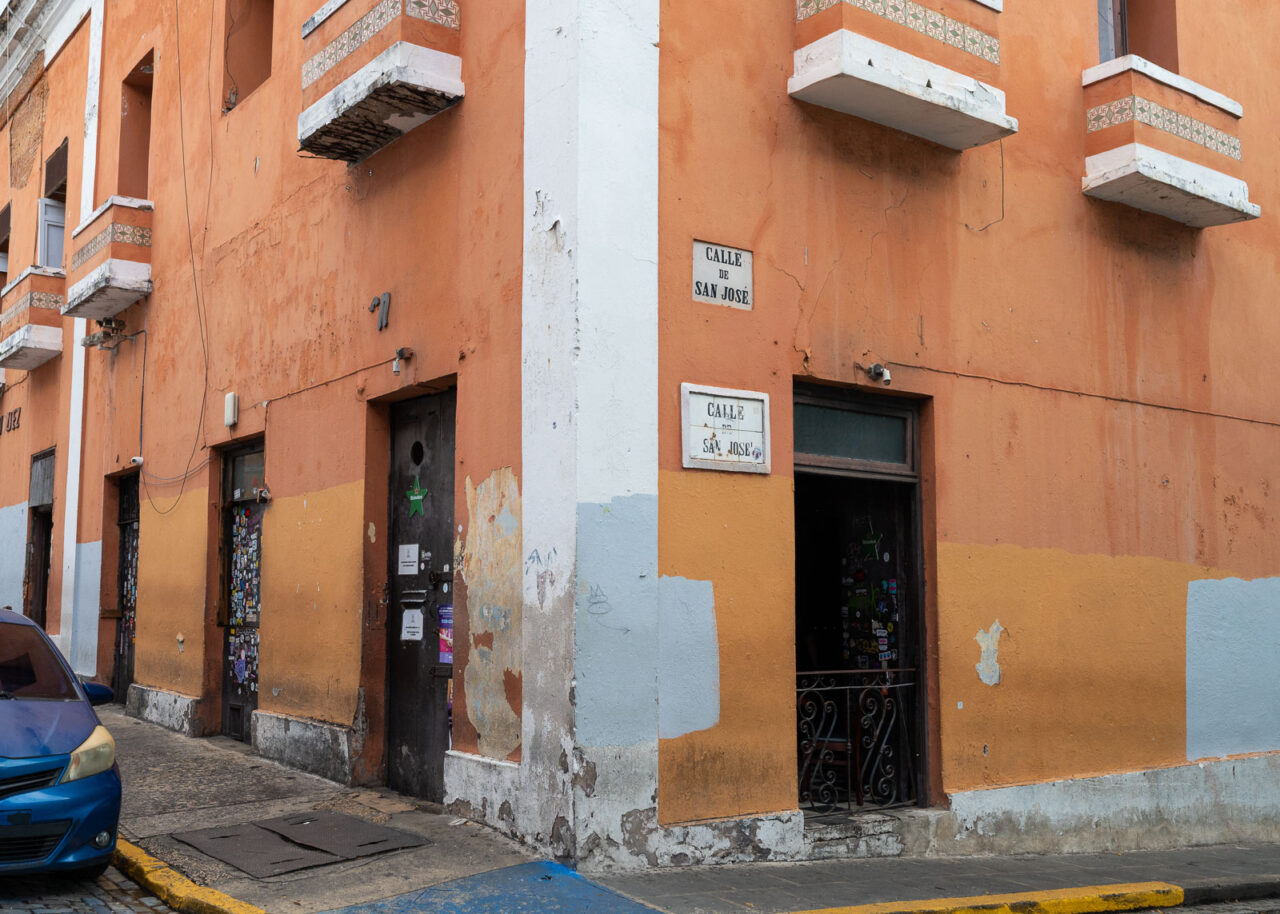
After night falls, head on over to La Factoria, an unassuming bar with no signage outside. This famous cocktail bar was ranked #32 in The World’s 50 Best Bars 2019 and is the best bar in San Juan if you want to have a good time!
On the menu you’ll find light bites such as fried mahi mahi bites, Angus beef sliders and pulled pork empanadas, as well as a good selection of beers, wines and cocktails. There’s more to this bar than first meets the eye; head on through to the back and you’ll discover a separate wine bar, as well as a dance floor that hosts salsa nights.
Museo de San Juan

Museo de San Juan is a free museum housed in a historic building that once served as San Juan’s main public market. The museum features a permanent exhibition detailing Puerto Rico’s history, as well as a wing used for temporary exhibits.
Callejón de la Puerta Bandera

Want to grab that quintessential Puerto Rico vacation shot? Head on over to Callejón de la Puerta Bandera, a colorful street with a doorway painted in the colors of the Puerto Rican flag. This quiet alleyway was featured in a music video for the famous song “Calma” by Pedro Capó, Alicia Keys and Farruko.
Be prepared to line up behind other tourists to wait your turn for a photo.
Puerto Rican Flag Door

If you walk along Calle San José you’ll stumble across a second Puerto Rican flag door, which is painted on the door of an old, abandoned building. The door is about 10ft tall and is one of the most photographed spots in Old San Juan.
It was originally painted in 2012 with the colors of the Puerto Rican flag, but in 2016 the colors were repainted to black and white. The black and white version was painted by the group Artistas Solidarixs en Resistencia, as a protest against the PROMESA law, which established a Fiscal Control Board in Puerto Rico.
Surrounding the door is a mural depicting various figures.
Plaza de Armas

Plaza de Armas is one of the largest plazas in Old San Juan and dates back to Spanish colonial times. It was designed as the city’s original main town square and is flanked by the San Juan City Hall to the north and the Puerto Rico Department of State to the west.
The plaza is modeled on the plazas of Madrid and Mexico City, and has been called various different names over the years. At one end of the square lies a large fountain, surrounded by four marble statues representing “The Four Seasons”.
If you feel like taking a break from sightseeing, grab a coffee and a pastry from one of the small kiosks and watch the world go by.
La Casita de Rones
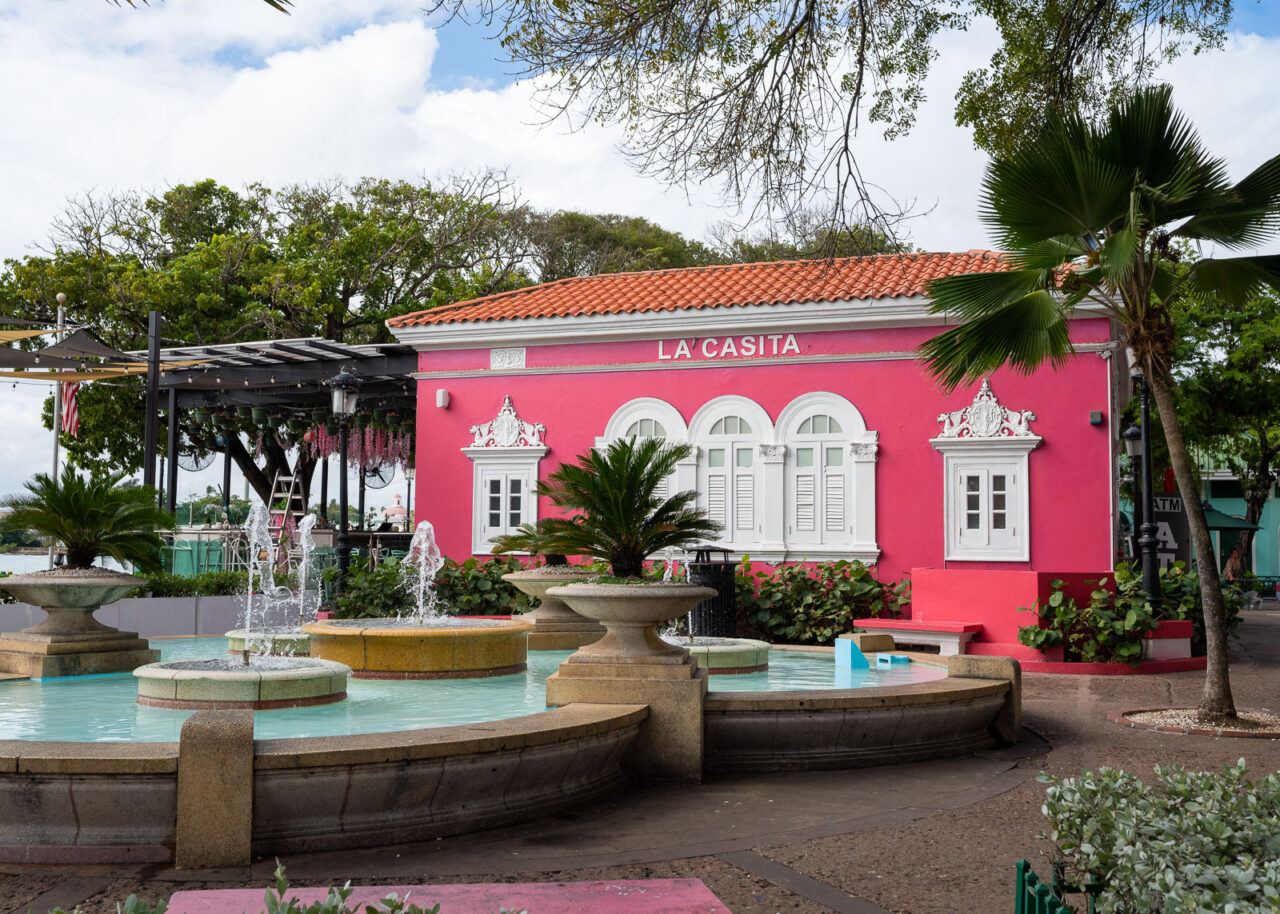
One of the prettiest spots in San Juan for photos, La Casita is a bright pink building with a fountain that overlooks the bay of San Juan. The venue houses two bars, a restaurant and a shop selling Puerto Rican rums.
If you’re feeling peckish, stop by the restaurant to try La Casita’s signature rum-glazed dishes and sample a variety of rum-based cocktails.
I Love PR Sign
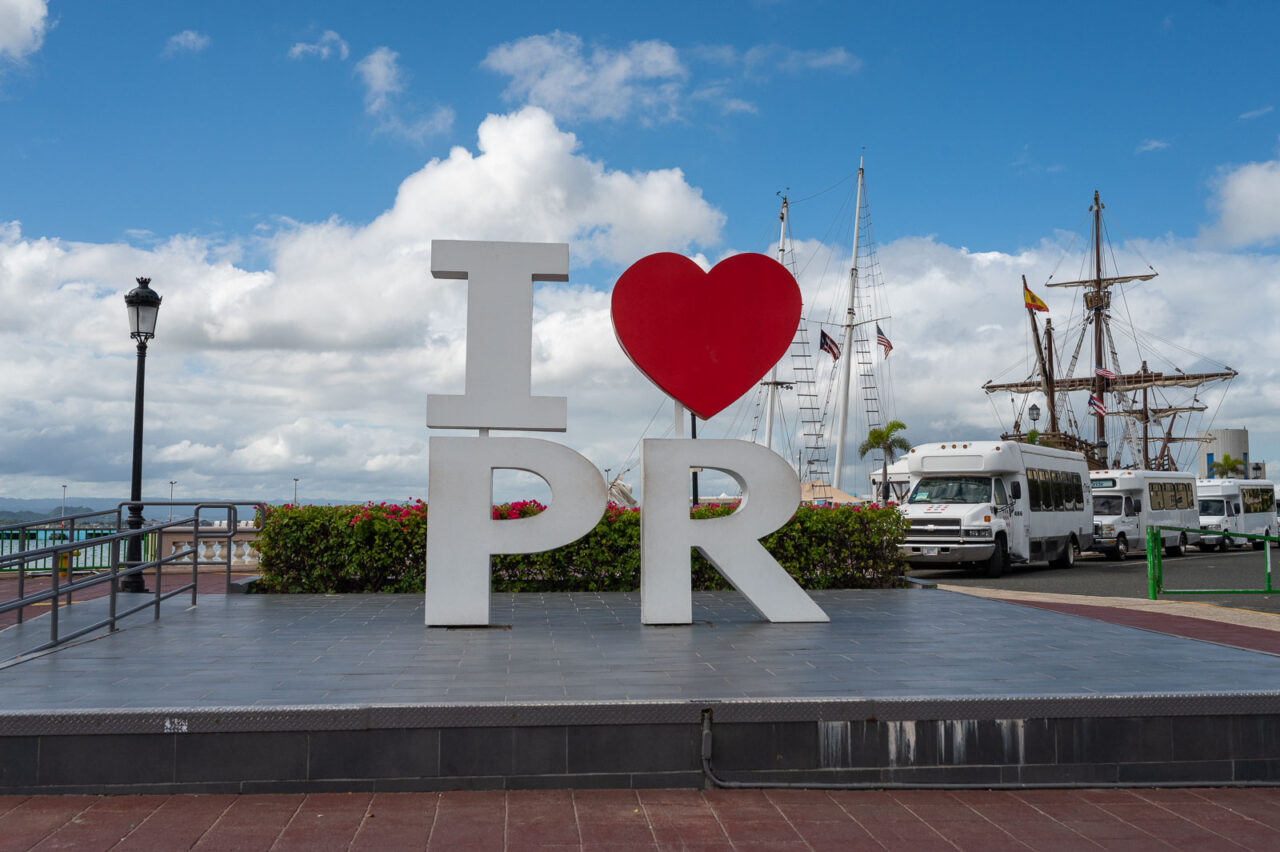
The I Love PR Sign isn’t technically inside the limits of Old San Juan, but it’s close enough. If you want to snap a photo that screams “I’m in Puerto Rico”, strike a pose next to this eye-catching sign, which is located on the waterfront, next to the San Juan Cruise Port Terminal.
La Corazon Steps
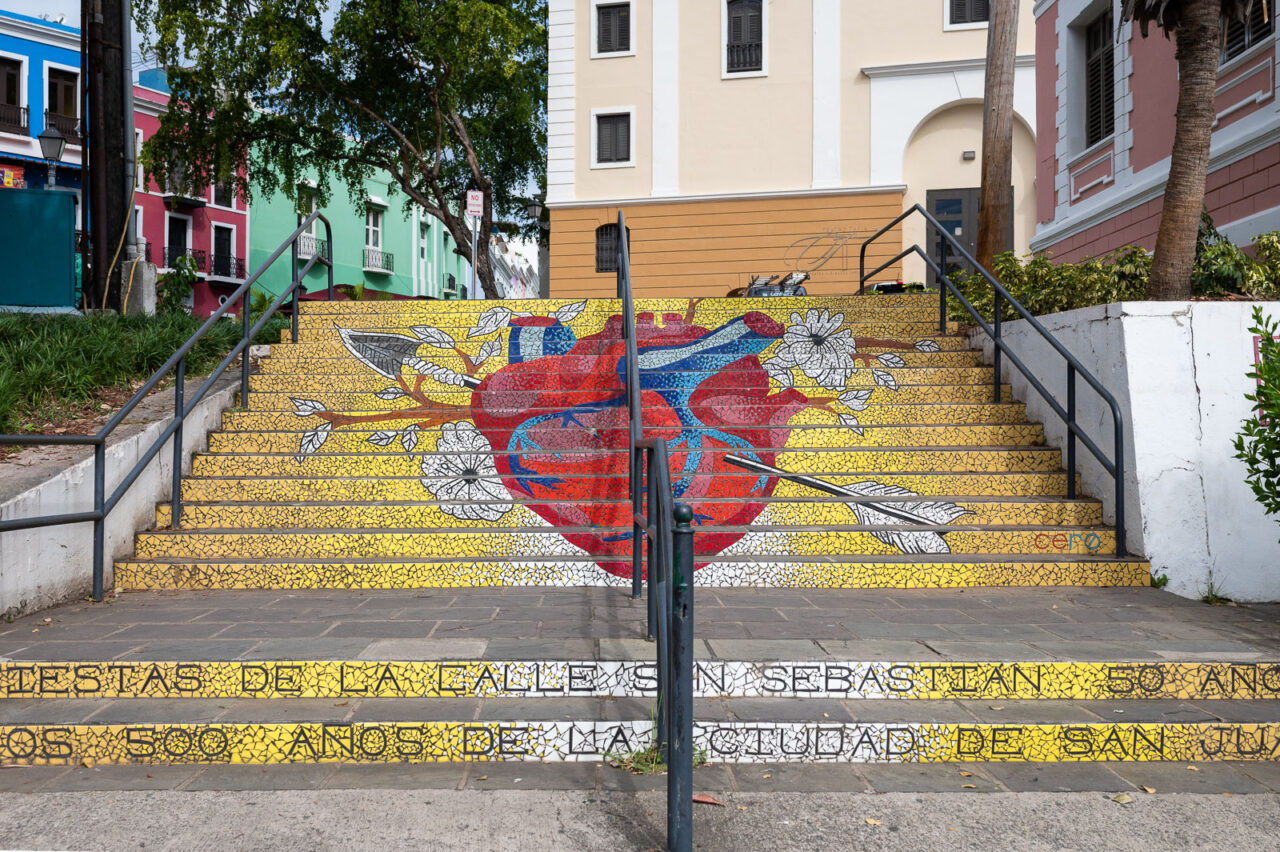
La Corazon steps reminded me a little bit of the Selaron staircase in Rio de Janeiro, with its bright colors and interesting design. This staircase is located xxx and features a human heart with an arrow through it, along with the words “Feistas de la calle San Sebastian 50 anos, Los 500 anos de la ciudad de San Juan”.
Fiestas de la Calle San Sebastián is Puerto Rico’s famous annual street festival that takes place in Old San Juan. The festival is a multi-day celebration that involves live music, dance performances and parties.
Plaza Colon

One of San Juan’s most important plazas, Plaza Colon stands right at the entrance to the walled city. The plaza sits on the former site of the former easternmost city walls and main city gate, which were knocked down in 1897.
In the center of the plaza stands a monument of Christopher Columbus, which commemorates the 4th centenary of the arrival of the Spanish in Puerto Rico. The square is a popular meeting place and is surrounded by restaurants, cafes and shops.
Castillo San Cristobal

Constructed by the Spanish to protect San Juan from land-based attacks, Castillo San Cristobal is a large fortress built on a hill in the eastern side of the old city.
Built between 1634 and 1765, the citadel covers an area of around 27 acres and is the largest fortification built by the Spanish in the New World. It is part of the San Juan National Historic Site, and was designated a UNESCO World Heritage Site in 1983.
It contains five very large cisterns (24 ft tall, 17 ft wide and 57 ft long), which were used by the Spanish for the storage of water. They were also used as bomb shelters during World War II.
Princesa Restaurant
If you plan on dining in Old San Juan, check out Princesa Restaurant, which has a tree out front covered in fairy lights. The restaurant has both indoor and outdoor seating, and offers an upscale take on traditional Puerto Rican cuisine.
On the menu you’ll find a selection of popular Puerto Rican dishes, such as ropa vieja and can can pork chop, as well as a variety of fresh fish. Some of the dishes offered are prepared using recipes from six different Puerto Rican cookbooks published between 1859 and 1950.The atmosphere here is magical, making it the perfect place for a romantic dinner or special occasion.
We tried the beef “piononitos”, the chayote and white beans salad, the smoked pork and chicken fried rice, and the mahi mahi. Everything was so delicious – definitely my favorite meal in San Juan!
A Final Word…
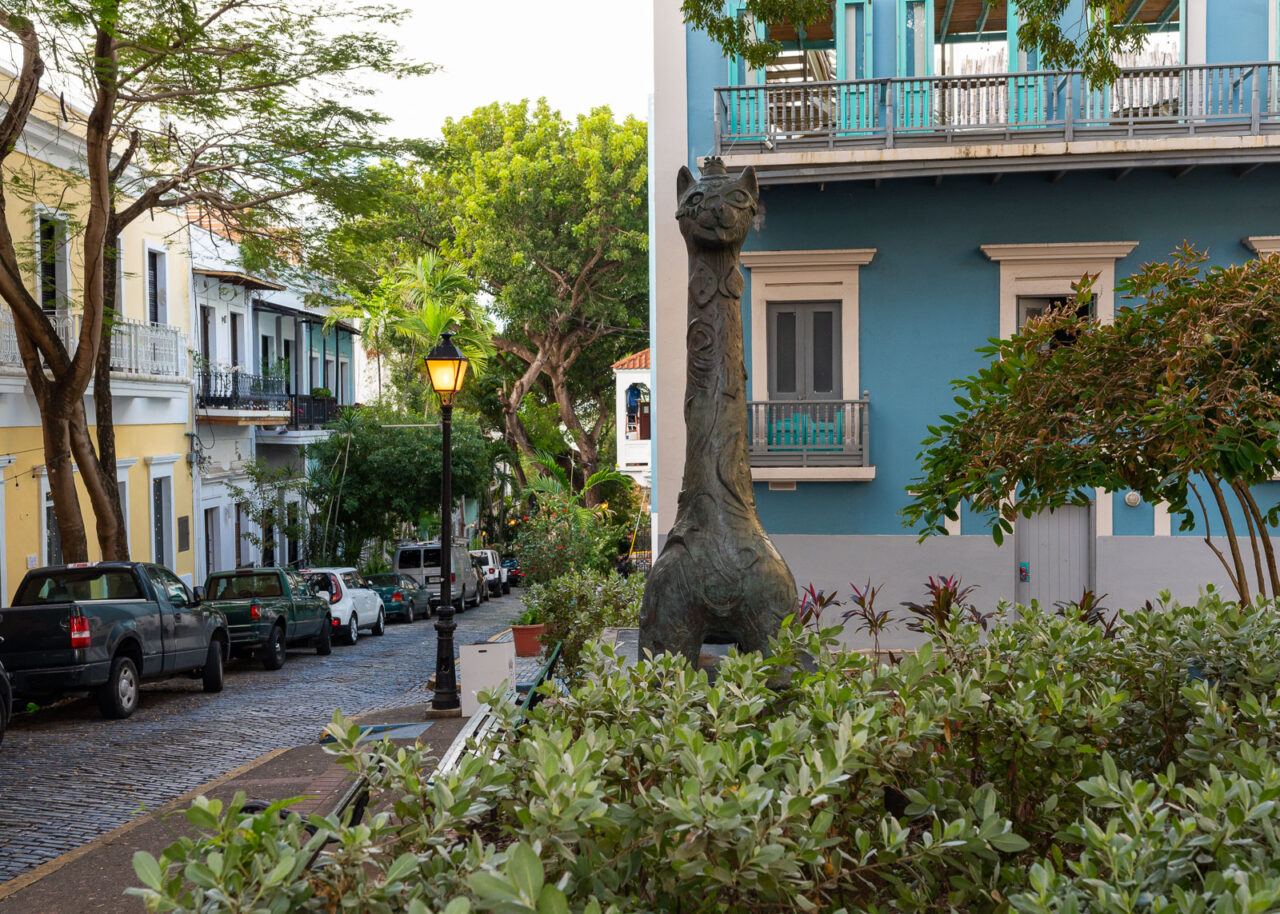
Old San Juan can be easily explored in a day, leaving you with plenty of time to explore more of Puerto Rico. I’d suggest spending around 3-7 days exploring the island – check out my 3 day Puerto Rico itinerary for inspiration.
Definitely try to include a trip to Culebra to visit Flamenco Beach, which is frequently listed as one of the world’s best beaches. I’ve written an entire guide on how to do a day trip to Culebra from San Juan, which includes information on how to get there, as well as things to do on the island.

